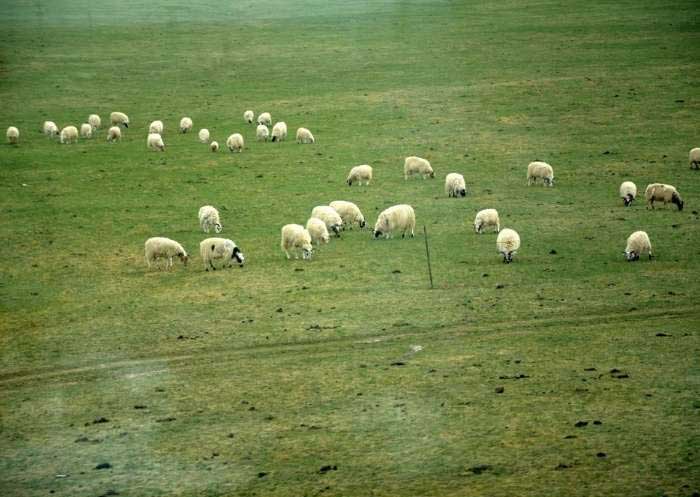We really enjoyed our 19 day tour of Bhutan, Nepal and Tibet tour arranged by Asian Odyessey. Alina helped customize our itinerary, mostly adding a few free rest days, and was very helpful in communication throughout. The tour guides, hotels and transportation were all excellent. I am happy to recommend them and indeed am looking at another tour.
- Highlights
- Itinerary
- Price
- Trip Notes
- Accommodation
- Photos
- Reviews
Want to travel to Tibet from Shanghai? Taking the Qinghai-Tibet Railway can be a romantic and evocative experience. The train ride transports you to a different world, one far from the hustle and bustle of urban. The train trundles its way through the back country and high mountains of remote Qinghai and into Tibet, stunning glaciers, towering peaks, shimmering salt lakes and picturesque villages.
Instead of taking a 47 hrs long train from Shanghai, our 13 Days Xining and Tibet Train Tour can take you directly flight to the starting point of the Qinghai-Tibet Railway and then start the train journey to Lhasa takes approximately 22 hours. In Xining, you can visit Qinghai Lake - the largest saltwater lake in China. After one night's sleep on the train, you will reach the holy land - Tibet. Our tour covers almost all the top attractions in the region, from Lhasa, Gyantse and Shigatse to the iconic Mount Everest. Join us on this once-in-a-lifetime train journey and discover the true beauty and romance of Tibet.
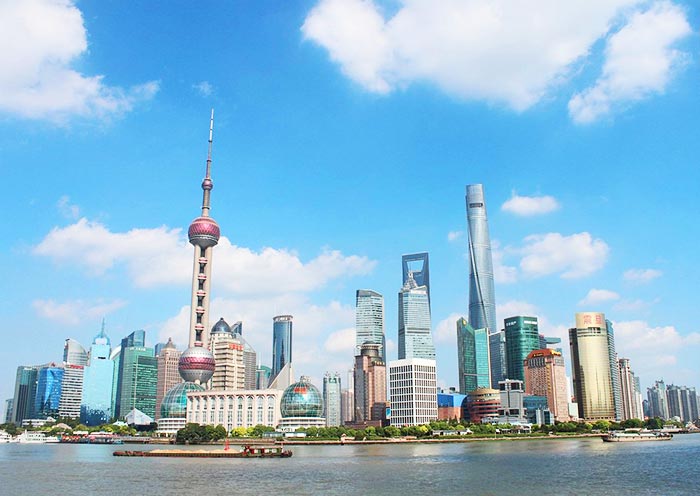
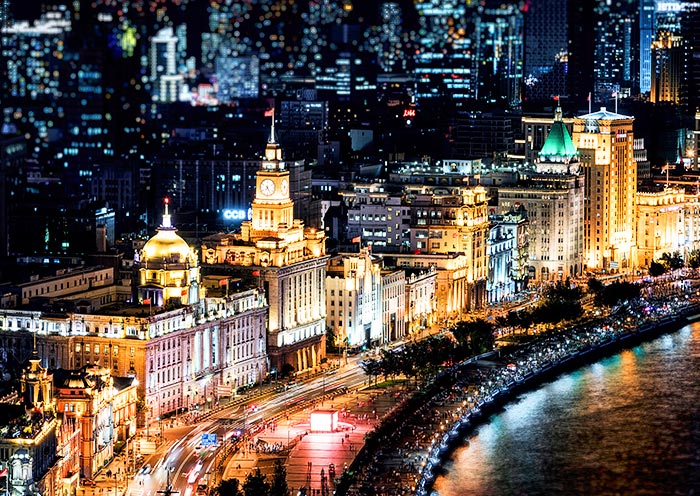
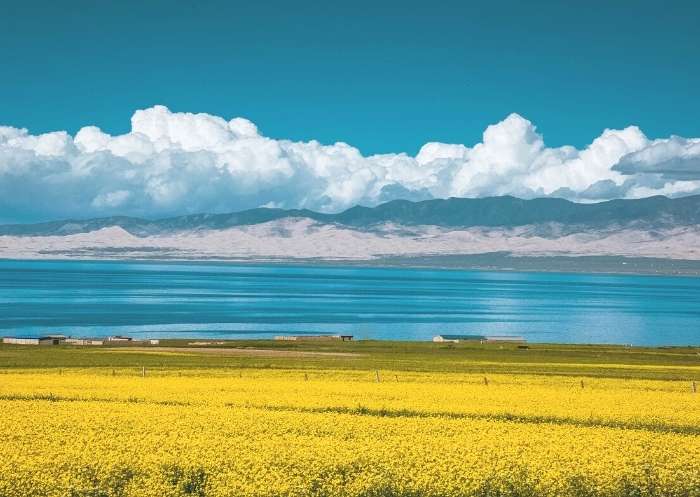




Itinerary at a Glance
Shanghai (2 Days)
Shanghai Museum, Yu Garden, The Bund, Nanjing Road, Shanghai Tower, Jade Buddha Temple
Xining (2 Days)
Qinghai Lake, Ta’er Monastery
Xining to Lhasa Train Ride (1 Day)
Enjoy the beautiful view along the Qinghai-Tibet Railway
Lhasa (4 Days)
Potala Palace, Sera Monastery, Jokhang Temple, Drepung Monastery, Barkhor Street
Shannan & Gyantse
Yamdrok Lake, Karola Glacier
Shigatse (2 Days)
Tashilhunpo Monastery
Mount Everest (2 Days)
Rongbuk Monastery, Everest Base Camp, Gyawu La Pass
Itinerary Day by Day
Nihao! Welcome to Shanghai, China’s most internationalized and vibrant city! Shanghai's long-term fusion of Eastern and Western cultures has contributed to Shanghai's unique culture. Upon your arrival at the airport/train station in Shanghai, the tour guide and driver will meet and greet you at the exit, and then escort you to the well-selected hotel in downtown Shanghai. The rest of the day is free on your own so you can have a good rest for the jet lag or explore by yourself around your hotel.
Arrival Ideas:
Travelers can go to Shanghai easily by air or high speed train. There are two airports - Shanghai Pudong International Airport and Shanghai Hongqiao International Airport operating numerous international and domestic airlines. Travelers can go to Shanghai by air from most cities in China, like Beijing, Xian, Guangzhou, Chengdu, Guilin, Kunming, Lijiang, Lhasa, and more. In addition, travelers can take high speed train to Shanghai from Beijing (4.5-6 hours), Xian (6-7.5 hours), Huangshan (2.5-3 hours), Guangzhou (7-8.5 hours), Suzhou (0.5 hour), Hangzhou (about 45 mins), Wuhan (3.5-4.5 hours), etc.
Free Time Ideas:
You are welcome to ask your tour guide for some useful tips to spend your free time based on your time and interest.


Today you will spend the whole day feeling the perfect blend of the West and East in this “Paris of the East” by visiting brilliant museums, traditional Chinese-style gardens, modern skyscrapers, and exotic architecture.
First, head to Shanghai Museum for an awe-inspiring visit to view the finest collection of art and learn about profound Chinese history. Built in the shape of an ancient bronze cooking vessel called a ding, Shanghai Museum has a round top and a square base, symbolizing “round sky, square earth”. It contains 120,000 cultural relics which showcase incredible artifacts of Chinese art throughout 5000 years’ history. Immerse yourselves in the Exhibition Hall of Bronze and Ceramic to appreciate the elaborate bronzes and exquisite artifacts. You won’t miss the chance to enjoy the top treasures - Da Ke Ding (bronze food vessel over 3000 years ago), and Bianzhong of Marquis Su of Jin (ancient musical instruments). Next, move to Yu Garden, the most celebrated classical Chinese garden hidden in the bustling Shanghai downtown area. Enjoy a leisure walk and visit the Chinese architecture, and feast your years with exquisite sculptures and carvings. Yuyuan Bazaar outside the garden is a fun place to taste some local snacks as well as buy some traditional Chinese handicrafts and artworks.
After that, you will take a stroll along Nanjing Road Pedestrian Street, where lots of well-known brands, restaurants, cafes, souvenir shops, and towering buildings stand on both sides. Continue your walk to the Bund, the top 1 place to visit on the Shanghai bucket list. Reputed as “An Exhibition of International Buildings”, the Bund is a collection of 52 buildings in various international architectural styles. Overlook the amazing skyline and skyscrapers of the Pudong Area from the Bund. The last stop today is the Shanghai Tower, the tallest building in China and the second in the world, at a height of 362 meters. Ascents up to 546 meters over the 118th floor for a breathtaking panoramic view of modern Shanghai.
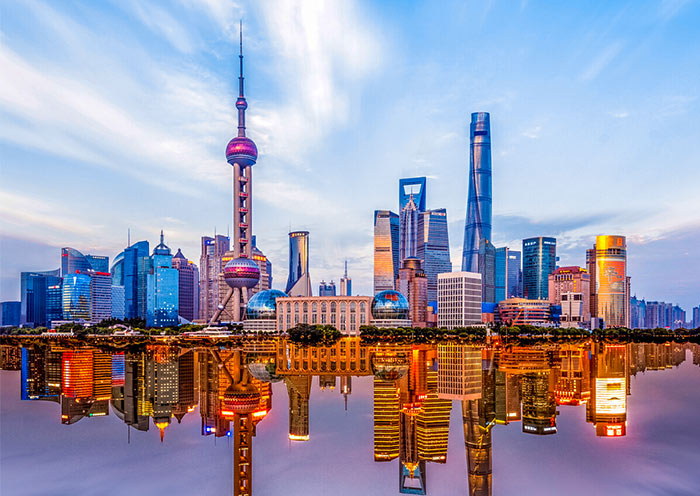

This morning, your guide will meet you in the hotel lobby and escort you to a peaceful walk in the Jade Buddha Temple in bustling Shanghai, among the modern blocks and mansions. It is one of Shanghai's few active Buddhist temples with about 70 resident monks. In this Shanghai must-see attraction, you will see the largest Jade Buddha in the world and local people throng to pray for prosperity. If there is still some time, you can transfer to Tianzifang in the former French Concession area of Shanghai. It is a place to find tourist arts and crafts, appreciate the preservation of local Shikumen architecture, and watch the daily life of local Shanghai people.Then you will head to the airport for your flight to Xining (about 3 hours).
Welcome to Xining, the capital city of Qinghai Province. You will be transferred from the airport to your hotel. The rest of the time is at leisure. You can have a good rest or walk around in the city.

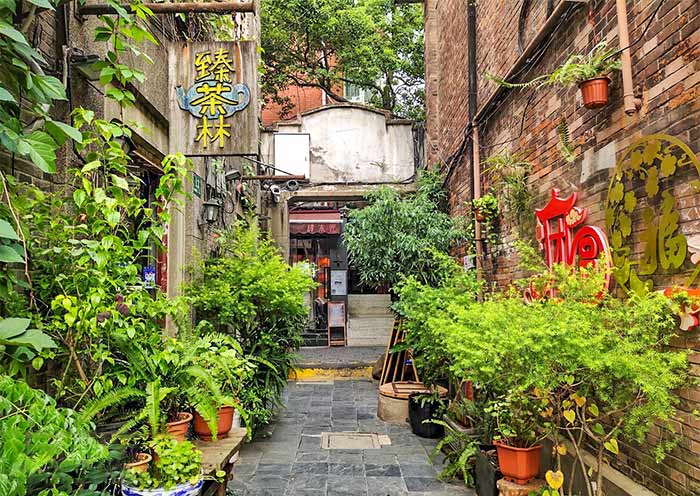
After breakfast, drive around 150 km (2.5 hours) to see Qinghai Lake from Xining via Huangyuan, Daotang Lake, Riyue Mountain, etc. En route, you won't feel bored. The picturesque landscape of vast grasslands dotted with Tibetan villages and herds of animals scattered throughout unfolds before your eyes like a magnificent gallery of photographs.
Qinghai Lake (elevation 3600m), the largest salt water lake in China, covers over 4,500 square kilometers. The lake is known for its stunning natural beauty and unique ecosystem. The lake displays varying colors when sunlight refracts through it, owing to the varying salt content in different parts of the lake. The lake is also home to a variety wild animals and an important breeding ground for several of species of birds. What’s more, the lake is considered sacred by Tibetans and is an important pilgrimage site.
Located on the southern shore of Qinghai Lake, Erlangjian Scenic Area is the essence of Qinghai Lake, which extends into the lake and is shaped like a long and narrow sword. You will spend a wonderful time appreciating the beauty of Qinghai Lake here. One of the main attractions of the scenic area is the plank road that runs along the edge of the peninsula, providing visitors with an excellent vantage point to admire the stunning beauty of Qinghai Lake. The far-reaching panorama of the crystal-clear waters, surrounded by vast grasslands and rolling hills, is a sight that will leave you in awe. The scenic area is also home to several cultural and historical sites, including the Erlangjian Temple, which is believed to date back to the Tang dynasty. Visitors can also enjoy a range of outdoor activities (optional), such as hiking, biking, and horseback riding, or rent a boat to explore the lake. After the day tour, we will head back to the city of Xining.
Qinghai Lake in Different Seasons:
Spring (March to May): It is a time to see the snow melting and the grass and flowers begin to bloom and also a great time for birdwatching.
Summer (June to August): The grasslands are in full bloom, creating a stunning vista of colorful flowers. Rape flowers bloom in July and August.
Autumn (September to November): The grasslands turn a golden yellow, and the leaves on the trees begin to change color, creating a colorful scenery.
Winter (December to February): the temperature drops, and the lake freezes over. The mountains become covered in snow, creating a stunning white landscape.

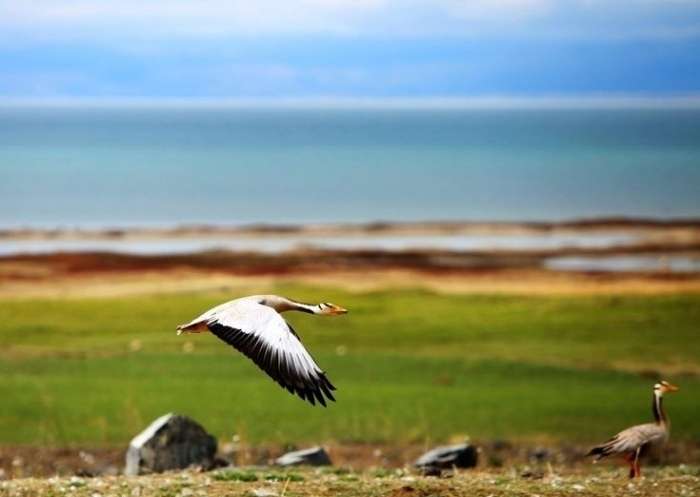
In the morning, we are going to visit Ta’er Monastery, one of the must-see religious sites in Xining. Located about 30km to the northeast of Xining City,
Ta'er Monastery, also known as Kumbum Monastery, is one of the six major monasteries of the Gelugpa sect (Yellow Hat) of Tibetan Buddhism in China. It was built in 1577 on holy ground - the birthplace of Tsongkhapa, founder of the sect. It is famous for its distinctive architecture, which combines Tibetan and Chinese styles, as well as for its rich collection of Tibetan Buddhist art and artifacts, including thangkas, statues, and manuscripts. One of the most notable features of Ta'er Monastery its the Stupa, which is a tall structure that contains multiple levels, each of which represents a different stage of the Buddha's life. The Stupa is surrounded by 108 smaller stupas, which are said to represent the 108 earthly desires that humans must overcome to achieve enlightenment. Also worth seeking out is three artistic wonders: butter sculptures, murals, and embroidery.
After the tour, you will be transferred to Xining railway station to board the train to Lhasa. (Note: Please be sure to bring your Tibet Permit which will be checked when you board the train.)
Useful Tips:
Sleeping Berths: The train has four types of sleeping berths, including soft sleeper, hard sleeper, soft seat, and hard seat.
Dining: The train offers a variety of Chinese and Tibetan dishes in dining cars. If Chinese food is not to your taste, you can bring some instant food.
Toilets: The train has both Western-style and squat-style toilets available in each soft sleeper carriage. However, passengers should be prepared for their towels, toilet paper, and hand sanitizer.
Oxygen Supplies: The train is equipped with oxygen supplies to help passengers acclimate to the high altitude of the Tibetan Plateau.


Altitude: 3650m
Pull up a window seat to view Himalayan mountains, shimmering lakes, plains dotted with yaks and herders’ tents, and barren deserts, as you inch slowly up onto the high plateau. Keep your eyes peeled throughout the journey for antelope, foxes and wild asses, plus the occasional nomad.After the whole day on the train enjoying the views outside, the train finally arrives in Lhasa..
Tashi Delek! Welcome to Lhasa, the capital of the Tibet Autonomous Region! Upon your arrival at the train station in Lhasa, the tour guide and driver will meet you at the exit, and then escort you to the hotel in downtown Lhasa. You can have a good rest to get used to the altitude (3,650m) in your hotel and get ready to explore Lhasa with your guide the next day.
Kind Reminds:
1. It is good to avoid highland sickness by slowing down, keeping warm, drinking some water frequently, not showering for the first one or two days, taking it easy, and sleeping well.
2. You should always follow your doctor’s advice on altitude according to your health condition.
3. Be sure to let your guide or the hotel staff know whenever you feel unwell or need help. The people there are always willing to help and good at dealing with altitude sickness.
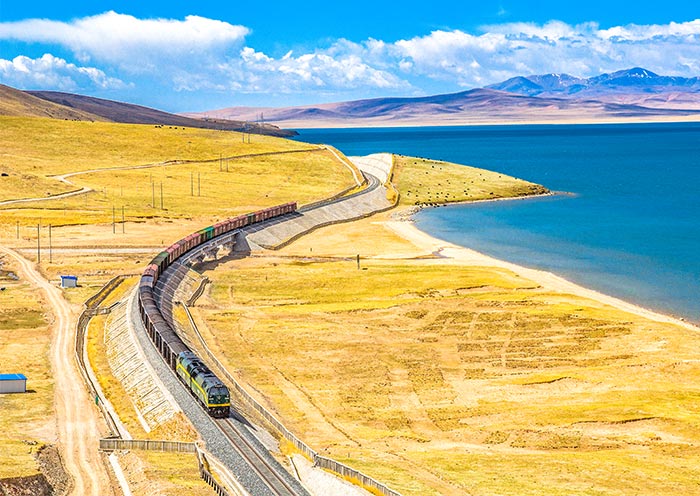

Altitude: 3650m
Today, you and your group will explore Lhasa by visiting Jokhang Temple, a world cultural heritage site renowned for its brilliant architecture, culture, art, and history. After that, you will experience Tibetan Buddhism by witnessing the Monks' Debating in Sera Monastery. Finally, you can stroll through the famous Barkhor Street with locals and learn more about the daily kora life of Tibetans.
Located in the heart of Lhasa for over 1300 years, the Jokhang Temple is an important pilgrimage site for Buddhists from all over the world. Famed as the spiritual center of Tibet, it is said that the Jokhang Monastery was built for King Songtsen Gampo's two brides: Chinese Princess Wencheng and Nepalese Princess Bhrikuti. "Jokhang" means "House of Buddha", and it houses a life-size statue of the 12-year-old Sakyamuni, which is considered a treasure of the Buddhist world. This is why Buddhist pilgrims consider it the holiest destination. The Jakhong temple is also renowned for its beautiful architecture. You can admire the intricate carvings, colorful murals, ornate decorations, and details of the building, which is a masterpiece of Tibetan architecture. Time seems to stand still as you watch people pray in front of the temple during the day and night. (Please note that the visit order may be adjusted based on the reservation of your Jokhang Temple Ticket Reservation.)
In the afternoon, drive approximately 30km (50 minutes) to visit Sera Monastery, which is one of the three great Gelug university monasteries of Tibet. It offers the opportunity to experience Tibetan Buddhism up close. The highlight of Sera Monastery is watching the monks' debate, which takes place around 15:00-17:00 (except on Sundays). The debate is an interesting form of exchange, where one monk acts as the questioner, standing while the answerer or group of answerers sit. The standing monk asks questions and slaps his palms and stomps, each action having a special meaning, such as activating wisdom, and are not meant to be aggressive. You will also have the chance to attend prayer ceremonies, visit meditation halls, and learn about the monastic way of life. It is a must-visit destination to gain insight into the beliefs and practices of Tibetan Buddhism.
Afterward, head back to downtown Lhasa for a walk on busy Barkhor Street near the Jokhang Monastery, which was a place for Buddhists to do a kora (pilgrim circuit) in ancient times. Nowadays, it has become a thriving local market where you can drink a pot of yak butter tea, dress in Tibetan clothes for photos, and pick up some local Tibetan, Nepalese, and Indian handicrafts and souvenirs.
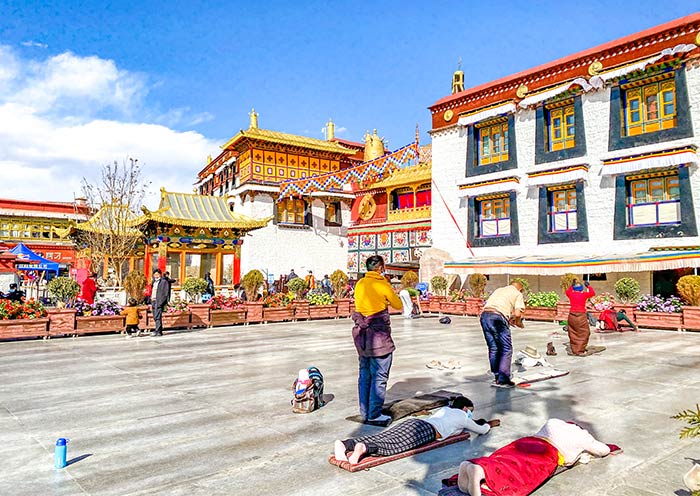
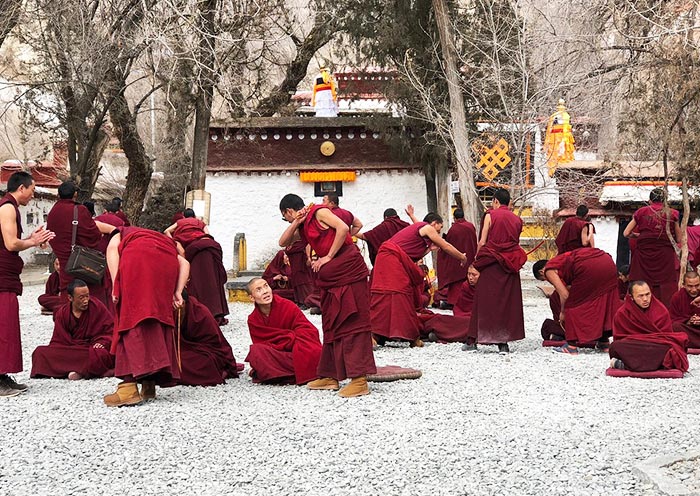
Altitude: 3650m
Today you will explore the world’s highest palace for its brilliant architectures, culture, and history, then visits to one of the "great three" Gelug university monasteries in Tibet - the Drepung Monastery.
In the morning, you can walk into Potala Palace (World Heritage), the traditional residence and winter palace of the Dalai Lama (1649-1959). It takes 365 steps from potala gate to reach the Red Palace which is the highest palace in the world at an altitude of 3,700m. Through the principal halls, chapels, and shrines of past Dalai Lamas in the Red Palace, you will be astonished and touched by its remarkable paintings, gorgeous jeweled works, skilled carving, colorful ornamentation, and the mystery stories behind the treasures. Inside the Potala Palace you will meet lots of Tibetan pilgrims who come all the way from afar to this sacred site to pray as their life time destination. You can also ask your guide to share more information about Songtsen Gampo, the 33rd king of Tibet, who first build the Potala Palace in the 7th century for his marriage to Princess Wencheng of the Tang Dynasty. (Note: We may adjust the visit order due to the visiting time of your Potala Palace Ticket. All visitors must visit the Potala Palace with a tour group while staying inside for an hour. No photo inside.)
Then, drive about 35 minutes (12km) to visit the Drepung Monastery, which was the largest Tibetan monastery (of the Gelug Sect) in Lhasa. It used to be the palace of the Dalai Lama before he moved to the Potala Palace in the 17th century. Today, it is famous for the Drepung Shoton Festival held each August, where people come to offer yogurt to the monks who have finished their 100 days of meditation. You can also witness the grandest Buddha/Thangka Unfolding Ceremony. Besides the unique architecture and amazing buildings, you can watch monks debating in Tibetan Buddhism, which is vibrant and active with expansive gestures, clapping, and stamping. After visiting the Drepung Temple, you will have about a 2-hour Tibetan culture tour, which includes an introduction, Tibetan incense making, and block printing.
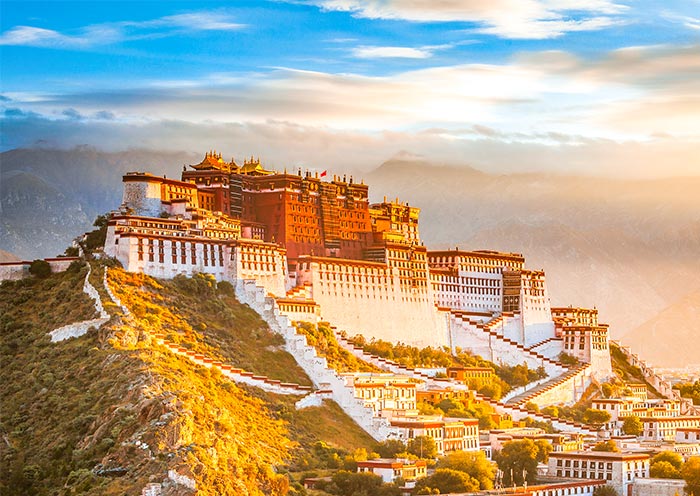

Altitude: 3850m | Distance: 380km, about 7 hours’ drive
On this day, drive about 8 to 9 hours (340km) from Lhasa to Shigatse, with a visit to two amazing natural landscapes - Yamdrok Lake and Karola Glacier - on the way.
In the morning, after about 3 to 4 hours of driving (200km), make sure to have your camera ready. When you reach Kampala Pass (4,797 meters), you'll have a breathtaking view of Yamdrok Lake, a freshwater lake down below, as well as spectacular views of the holy Mt. Nyenchen Khangsar in the distance. It is one of the four largest sacred lakes in Tibet, along with Lhamo Latso Lake, Manasarovar Lake, and Namtso Lake. Yamdrok Lake offers stunning views of the Tibetan plateau and is said to be able to help Tibetans find the reincarnated soul of the Dalai Lama. Moreover, you may see dressed-up Tibetan mastiffs, dogs, goats, and yaks there. It is optional for you to pay 5-10 yuan to pose with and take photos of them; for local Tibetans, it's a way to earn extra income for their families.
In the afternoon, drive about 1.5 hours (70km) to visit one of the most beautiful glaciers in Tibet - Karola Glacier, the filming location of the movie "Red Valley" (Hong He Gu). As one of Tibet's three major continental glaciers, backed by the southern slope of Naiqin Kangsang Peak (7,191 meters), one of the four highest peaks in Tibet, this white glacier is also the source of the eastern part of the Nianchu River. The Karola Glacier (5,012m) is only 300 meters away from the highway connecting Lhasa to Gyantse town, and you can view it right from your vehicle. You can also easily walk to the foot of the charming glacier, which has a shape like a frozen waterfall right above the road and you. Besides the fantastic hike to the Karola Glacier, on the opposite side of the road, you can appreciate the beautiful snow-capped mountain of Mt Kalurong.
Notes for visiting Karola Glacier:
1. The altitude at the glacier scenic spot is about 5,012m, so be sure to slow down to avoid altitude sickness.
2. The public toilet at the glacier is very basic.
3. Local people may ask you to take photos with them for a fee. Be sure to ask before taking photos to avoid potential issues.
After that, drive about 3.5 hours (170km) to your hotel in Shigatse, the nearest town on the Friendship Highway between Tibet and Nepal. Have a good rest and get ready for a once-in-a-lifetime trip to EBC the next day.
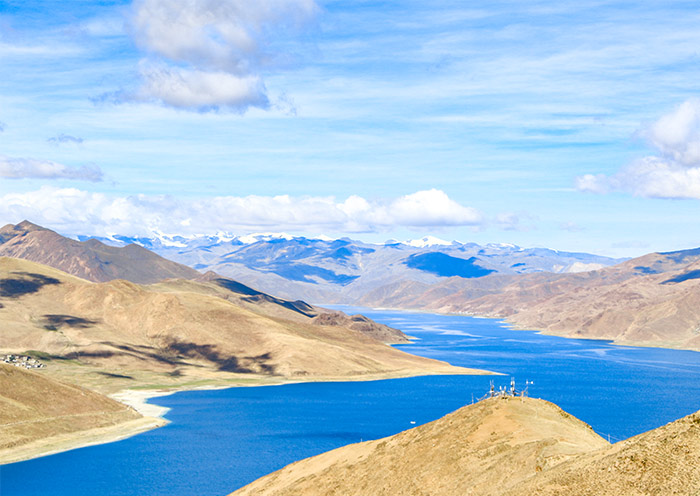
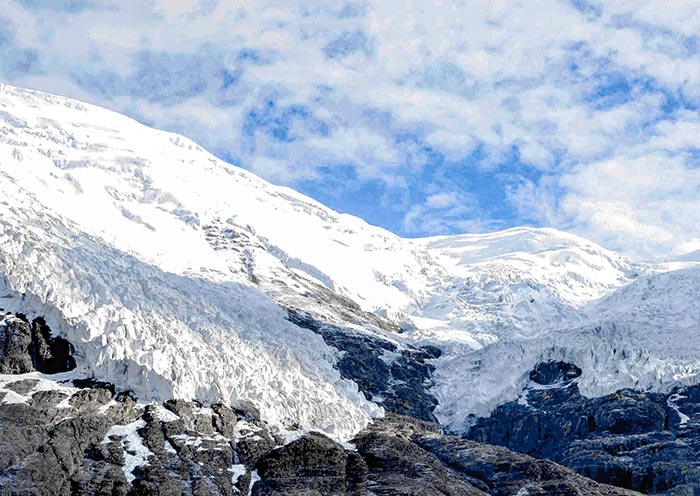
Altitude: 3850m | Distance: 340km, about 7 hours’ drive
After breakfast, drive about 6.5 hours (330km) to the peak of the world - Mount Everest, while stopping by the Rongbuk Monastery - the world’s highest altitude monastery, before spending the night at the Everest Base Camp (EBC).
Departing from Shigatse, after about 4.5 hours of driving (240km), you’ll get your first glimpse of Mt. Everest from the Gyawu La Pass (5,200m, Gyatso La Pass), between Lhatse and Shelkar. In addition to Mt. Everest, you’ll be amazed by the winding road that seems to go on forever. Along the way, you may see local people biking or hiking all the way to Everest Base Camp. For them reaching the base of the world's highest mountain is a must-do goal or holy belief that is worth the effort.
After enjoying the beautiful and unique scenery on the pass, including incredibly snow-capped mountain ranges, blue skies, floating high clouds, and endless grasslands, it is time to head to Rongbuk Monastery (about 3.5 hours,122km) for the first good view of Mt. Everest. At an altitude of 5,154m, Rongbuk Monastery is the world’s highest monastery, a must-visit for spiritual travelers, and is also photo-worthy. It used to be an area of meditation huts, and you can find hermitage meditation caves with a history of over 400 years, dotting the cliff walls all around the monastery and the valley. Along with brilliant Mt. Everest views, at Rongbuk Monastery, you will be touched by the breathtaking scenery, such as large white chortens, piles of mani stones, colorful prayer flags, devout pilgrims passing by. This evening, you will enjoy dinner with the group, featuring Hot Pot in EBC.
Notes:
1.Travelers can only go as far as the Rongbuk Temple area rather than a few kilometers farther as before. But it’s not a big difference in terms of viewing Mt.
Everest. 2.Today’s food and lodging is very basic. Due to the high altitude, it is possible that you may experience some symptoms of altitude sickness. We recommend that you stay well hydrated, relax and enjoy the beautiful scenery to minimize your symptoms.


Altitude: 3650m | Distance: 340km, about 7 hours’ drive
Watching the sunrise over Mt. Everest is a popular activity, you can choose to wake up early in the morning and hike to a nearby vantage point to witness this breathtaking and unforgettable sight.The sunrise over Mt. Everest is not only a beautiful natural phenomenon but also a symbol of human achievement and perseverance.
Then head back to Gyatso La Pass (Gyawu La Pass, the Dingri Boundary, 122km, 3.5 hours) for a quick photo stop. After that, drive back to Shigatse (240km, about 4.5 hours).
After that, drive back to your hotel in Shigatse, take a shower, and prepare for the departure the next day. (Please note that we will arrange for you to take the train or vehicle back to Lhasa from Shigatse, depending on the conditions.)
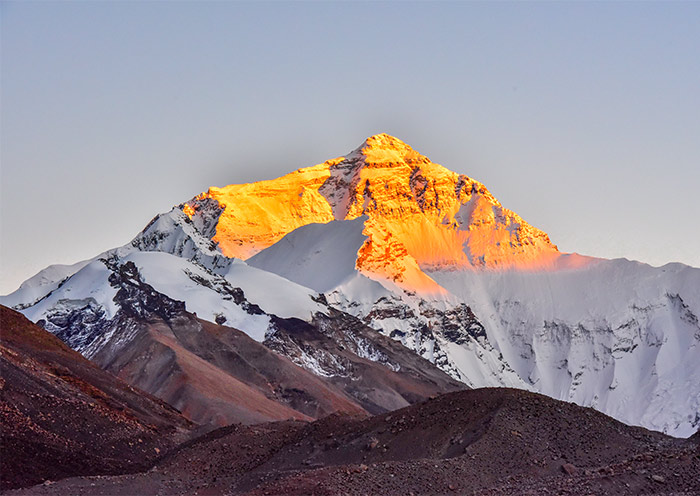

Altitude: 3650m | Distance: 340km, about 7 hours’ drive
This morning, you will pay a visit to Tashilunpo Monastery. After that, take a train (about 2.5 hours) or take a vehicle (about 8 hours, 340km) back to Lhasa.
Founded by His Holiness the 1st Dalai Lama, Gyalwa Gedun Drup in 1447, Tashilunpo Monastery is the largest monastery in Tsang Area of Tibet. In Tashilunpo Monastery, you can visit the traditional seat of successive Panchen Lamas, Tibet's second-highest incarnation. Pay a visit to the ancient tombs of the fourth and tenth Panchen Lama, as well as the chortens, which hold the bones and remains of the sacred Tibetan lamas. Learn more from your guide about Panchen Lamas and Dalai Lamas while appreciating the brilliant religious painting on Tibetan architecture, listening to the Tibetan Buddhism chanting by local monks, and even participating in the kora like locals. Don’t forget to hike up to the top of the monastery for a stunning bird’s eye view of the monastery itself and Shigatse City.
Afterward, head back to your hotel in downtown Lhasa for a good rest.


Altitude: 3650m | Distance: 100km, about 1.5 hours’ drive
It is time to end your 13-day Xining Tibet Train Tour from Shanghai. You will have some free time in Lhasa and explore more on your own till your guide escorts you to the airport/train station for your flight or high speed train to your next destination.
Extension Ideas: If you prefer to travel longer in Tibet, you can extend your trip to other highlighted parts of Tibet, including Namtso Lake, Mount Kailash and Ancient Guge Kingdom. Tell us your ideas.
Thank you for choosing Asia Odyssey Travel for your China tour, and we are always here working for you and hope to see you again for your next trip to China/Asia. Safe journey!

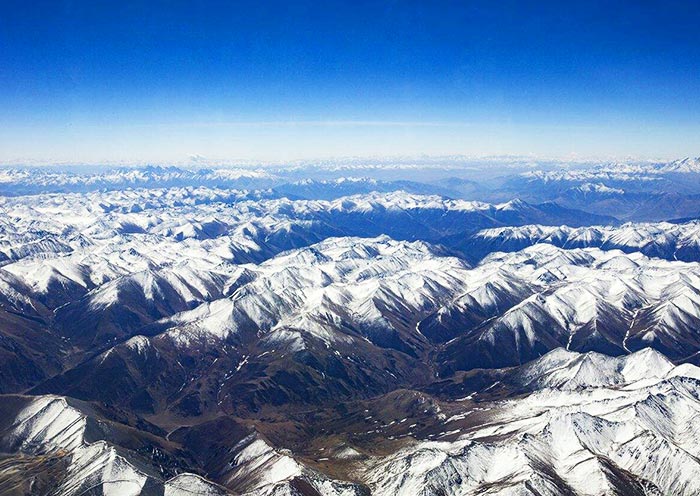
Price: What’s Included & What’s Excluded
What’s Included?
What’s Excluded?
Important Trip Notes for Booking a Private Tibet Tour
All foreign travelers are advised to make their bookings at least one week in advance and send the necessary documents to us for obtaining the permits. However, if you plan to visit Mount Kailash, it is recommended to book at least two weeks in advance, as it may take longer to obtain the necessary permits.
Accommodation & Hotel Condition for Your Tibet Tour
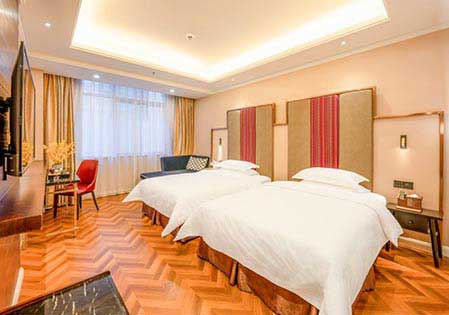
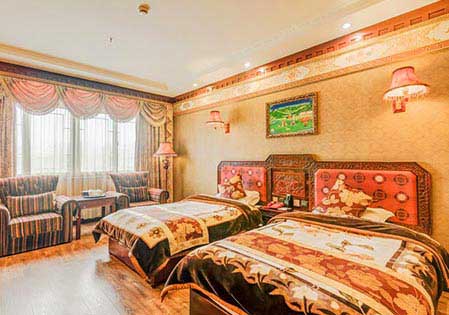
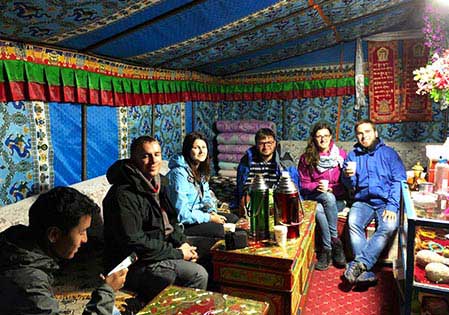
View Photo Gallery for This Itinerary
Latest Shanghai Tibet Tours Reviews from Our Customers

Clive
Britain
Destination(s): Tibet
Date of Experience: Oct 21, 2024
Tour Customized by: Alina
You May be Interested in This Tour: Customized Tour

Zhang Ao Yang
Hong Kong, China
Fantastic tour with an introduction to the history and culture of tibet. The scenery is also fantastic. Special thanks to my travel consultant Lea and my tour guide Bob for this amazing trip.
Destination(s): Tibet
Date of Experience: Mar 25, 2025
Tour Customized by: Lea
You May be Interested in This Tour: 8 Days Tibet Discovery Tour from Lhasa to Mount Everest Base Camp

kayvanp
Singapore
The itinerary was a well-planned 12 days trip from Shanghai to Xining then Lhasa (Tibet).
Our guide, Lobsang Dorje, has been wonderful. He is always available (punctual & responsive on weChat) and ready to go the extra mile accommodating to our dietary (vegetarian) and sanitary demands in Tibet. We are beyond grateful to have him as our guide.
Special thanks to our agent, Shirley, in making this trip possible to planning out the details for our trip e.g., itinerary, accommodation and transportation. We manage to visit all the itinerary that was planned out including Everest Base Camp with additional stopover for sightseeing.
All-in-all, we believe that the full cultural experience in Tibet could not been achieved without an experienced guide (Lobsang Dorje) and agent (Shirley). We are well satisfied the level of service that was provided by the guide and agency.
Destination(s): Shanghai, Tibet
Date of Experience: Jul 26, 2024
Tour Customized by: Shirley
You May be Interested in This Tour: 13 Days Shanghai Tibet Xian Beijing Tour
Price: request
(Based on a private tour for two people. Price varies depending on program, travel date, number of people.)
Free Enquiry! You don’t need to pay for the reservation.
- United States (+1)
- Australia (+61)
- Singapore (+65)
- Malaysia (+60)
- Philippines (+63)
- Canada (+1)
- Italy (+39)
- Indonesia (+62)
- United Kingdom (+44)
- Spain (+34)
- Mexico (+52)
- Hong Kong (+852)
- Thailand (+66)
- United Arab Emirates (+971)
- New Zealand (+64)
- South Africa (+27)
- Germany (+49)
- Brazil (+55)
- India (+91)
- France (+33)
- Vietnam (+84)
- The Netherlands (+31)
- Saudi Arabia (+966)
- Ireland (+353)
- Argentina (+54)
- Switzerland (+41)
- Romania (+40)
- Pakistan (+92)
- Japan (+81)
- Portugal (+351)
- Bangladesh (+880)
- South Korea (+82)
- Puerto Rico (+1)
- Türkiye (+90)
- China (+86)
- Belgium (+32)
- Qatar (+974)
- Greece (+30)
- Taiwan (+886)
- Austria (+43)
- Poland (+48)
- Israel (+972)
- Chile (+56)
- Sri Lanka (+94)
- Nigeria (+234)
- Peru (+51)
- Colombia (+57)
- Hungary (+36)
- Nepal (+977)
- Denmark (+45)
- Bulgaria (+359)
- Norway (+47)
- Slovenia (+383)
- Sweden (+46)
- Kuwait (+965)
- Costa Rica (+506)
- Ecuador (+593)
- Venezuela (+58)
- Malta (+356)
- Croatia (+385)
- Tunisia (+216)
- Czechia (+420)
- Mongolia (+976)
- Bahrain (+973)
- Mauritius (+230)
- Papua New Guinea (+675)
- Cambodia (+855)
- Dominican Republic (+1)
- Luxembourg (+352)
- Finland (+358)
- Guatemala (+502)
- Myanmar (+95)
- Maldives (+960)
- Slovakia (+421)
- Laos (+856)
- Serbia (+381)
- Brunei (+673)
- Oman (+968)
- Macao (+853)
- Panama (+507)
- Morocco (+212)
- Jordan (+962)
- Georgia (+995)
- Fiji (+679)
- Bolivia (+591)
- Lithuania (+370)
- Bahamas (+1)
- Cyprus (+357)
- Latvia (+371)
- Bhutan (+975)
- Iraq (+964)
- Iran (+98)
- Kenya (+254)
- Jamaica (+1)
- Zimbabwe (+263)
- Azerbaijan (+994)
- Uruguay (+598)
- Estonia (+372)
- Andorra (+376)
- Cameroon (+237)
- Ghana (+233)
- Kazakhstan (+7)
- Nicaragua (+505)
- Egypt (+20)
- Russia (+7)
- Albania (+355)
- Réunion (+262)
- Montenegro (+382)
- Algeria (+213)
- Afghanistan (+93)
- Martinique (+596)
- Uganda (+256)
- Honduras (+504)
- North Macedonia (+389)
- Trinidad and Tobago (+1)
- Suriname (+597)
- Antigua and Barbuda (+1)
- Zambia (+260)
- Ukraine (+380)
- Armenia (+374)
- Barbados (+1)
- Belarus (+375)
- Palestine (+970)
- Lesotho (+266)
- Moldova (+373)
- Ethiopia (+251)
- French Polynesia (+689)
- Gambia (+220)
- Guam (+1)
- Gibraltar (+350)
- Isle of Man (+44)
- New Caledonia (+687)
- El Salvador (+503)
- Comoros (+269)
- Seychelles (+248)
- Chad (+235)
- Samoa (+685)
- Cook Islands (+682)
- Palau (+680)
- Paraguay (+595)
- DR Congo (+243)
- Solomon Islands (+677)

